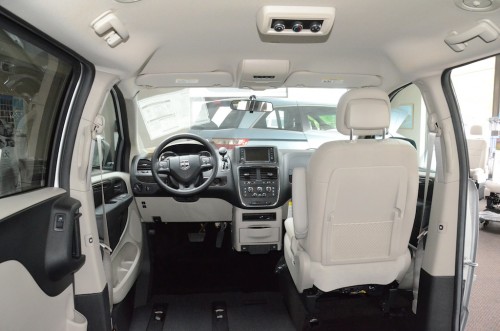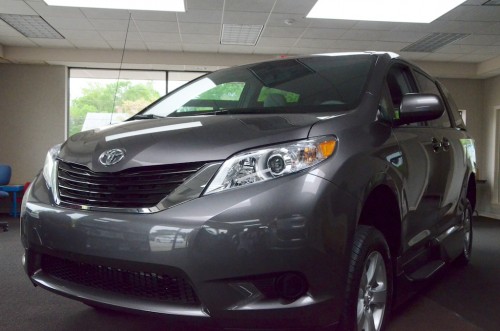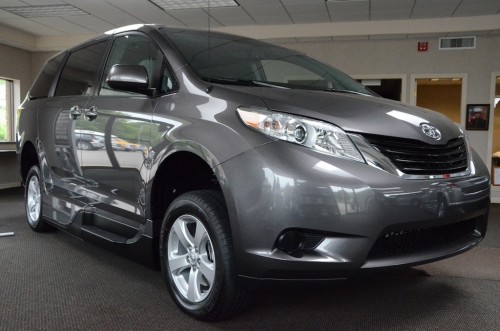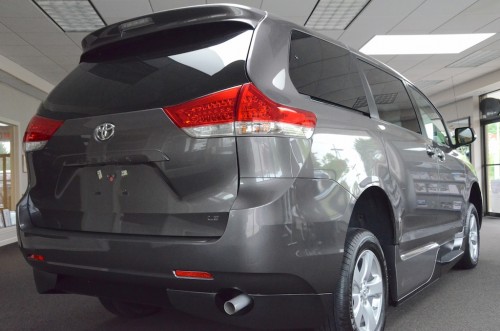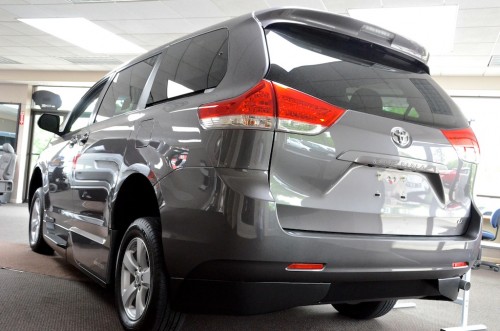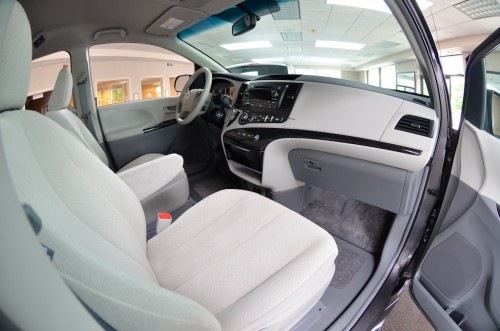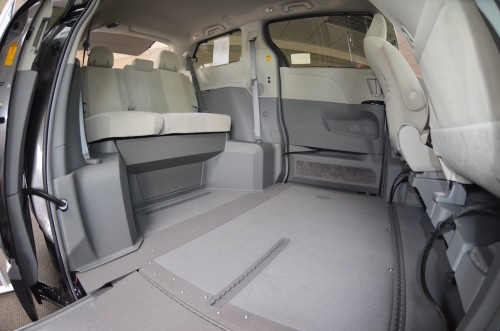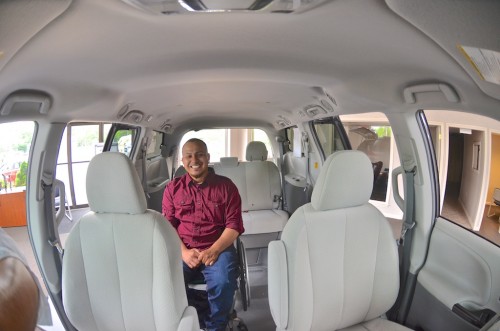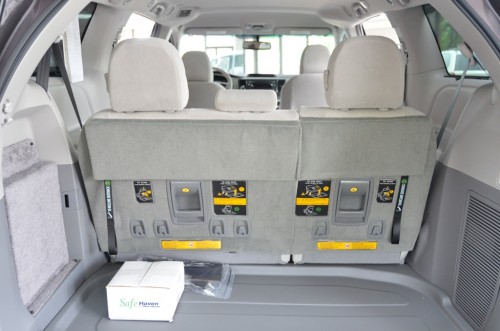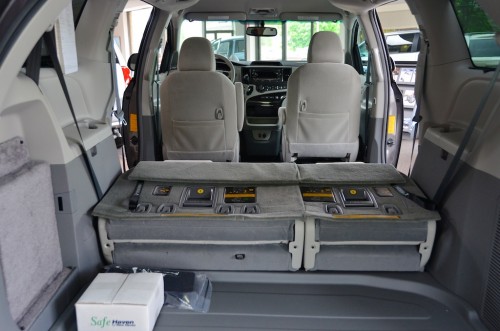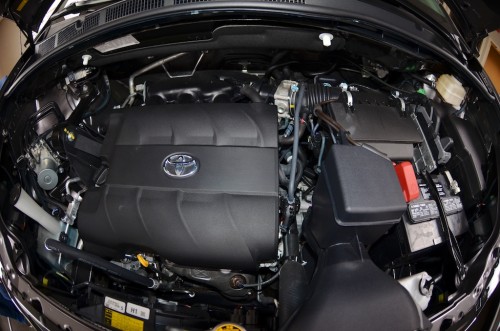Honda Odyssey | 2011 | Frontal Crash Test
2013 Honda Odyssey Offers Unmatched Safety Ratings, Class-Leading Fuel Economy Ratings and High-Tech Convenience Features
The 2013 Honda Odyssey minivan continues to lead its class in fuel economy and safety ratings, while providing spacious accommodations for up to eight passengers and a refined and engaging driving experience. The Odyssey Touring is rated at a remarkable 28 mpg1, the highest EPA highway fuel economy rating of any eight-passenger minivan. All Odyssey models are an Insurance Institute for Highway Safety (IIHS) TOP SAFETY PICK, and the Odyssey has earned the best possible overall safety rating from the National Highway Traffic Safety Administration (NHTSA) with a 5-Star Overall Vehicle Score,2 an accomplishment that no other currently-tested minivan can claim. The 2013 Honda Odyssey went on sale September 6, and pricing begins at $28,5753.
There are five models in the Odyssey range: LX, EX, EX-L, Touring and Touring Elite. Each provides a unique combination of features, value, luxury and in-vehicle entertainment technology. Changes for 2013 include a rearview camera that’s now standard on all Odyssey trims, and the base Odyssey LX now shares a simplified center stack design with the Odyssey EX. The new center stack includes an 8-inch full-color intelligent Multi-Information Display (i-MID) along with a rearview camera,Bluetooth® HandsFreeLink®, Bluetooth® Audio, USB input, and CD library function.
Powertrain
All Odyssey models are powered by an advanced 3.5-liter, 24-valve, SOHC, i-VTEC V-6 engine with Variable Cylinder Management (VCM), which provides a balanced combination of performance, fuel efficiency and low emissions. Producing 248 horsepower (hp), it’s the most powerful engine ever for the Odyssey. With 250 lb-ft. of torque at 4800 rpm, the engine offers excellent responsiveness and acceleration, while delivering a class-leading V-6 EPA city/highway/combined fuel economy2rating of 19/28/22 mpg on Odyssey Touring models (18/27/21 mpg on Odyssey LX, EX and EX-L models). A 5-speed automatic transmission is standard on Odyssey LX, EX and EX-L models. Odyssey Touring models feature a 6-speed automatic transmission for enhanced driving refinement.
Body
The Odyssey has a distinctive body design with a signature “lightning bolt” side character line that creates a dynamic appearance, and improves the outward view for third-row passengers through a larger rear window. Interior quietness was a design priority, and the Odyssey’s highly rigid body is constructed of 59-percent high-strength steel to help isolate road noise and to reduce body weight for agile handling and excellent fuel efficiency.
Chassis
For confident driving performance and a comfortable ride, the Odyssey features a long 118.1-inch wheelbase, with a fully independent suspension and standard Vehicle Stability Assist (VSA®) with traction control. MacPherson strut front suspension and multi-link rear suspension combine to give the Odyssey a quiet, composed ride. Variable power-assisted rack-and-pinion steering assures light steering effort in low-speed maneuvering coupled with secure highway manners.
Interior
The Odyssey’s roomy interior offers a wide range of seating versatility to accommodate child seats, adult passengers and cargo. The passenger volume measures 172.5 cu-ft. (Odyssey LX and EX) and the cargo volume ranges between 38.4 cu-ft. of cargo volume (all seats up) to 148.5 cu-ft., depending on the seating configuration. With the second-row seats removed, a 4×8 sheet of plywood can fit inside the Odyssey’s cargo bay. With the available front console removed, 10-foot-long 2×4 studs can fit inside the vehicle.
The Odyssey’s interior provides three rows of comfortable seating with generous legroom in each row. Up to five Lower Anchors and Tethers for CHildren (LATCH) positions for child seats (the Odyssey LX has four LATCH positions) allow parents great flexibility in locating car seats.
The driver’s seat is 10-way power adjustable (8-way power adjustable on Odyssey LX) for maximum comfort. A “3-mode” second-row seat design provides the ability to attach up to three child seats across the second row (Odyssey EX and above) by relocating the outboard seats to alternate positions closer to the doors. The one-motion, 60/40 split third-row Magic Seat®, one of the Odyssey’s most versatile features, is easy to operate with one hand.
The Odyssey offers an extensive range of standard comfort and convenience features, including air conditioning with manual front and rear controls, power driver’s seat, power windows with auto-up/down on the driver’s and front-passenger’s windows, tilt and telescopic steering column, and a maintenance minder system. Odyssey EX models and above come standard with power sliding rear doors, center console storage and a conversation mirror. Odyssey EX-L models include leather-trimmed seating surfaces (front and outboard second row), heated front seats, power tailgate, a cool box, and XM Radio® capability. Standard equipment on the Odyssey Touring includes the Honda Satellite-Linked Navigation System4, a Rear Entertainment System with a 9-inch display, driver’s seat with two-position memory, 115-volt power outlet, fog lights, parking sensors, and a six-speed automatic transmission. The Odyssey Touring Elite adds an Ultra-Wide Rear Entertainment System (RES), blind-spot information system, and High Intensity Discharge (HID) headlights.
For 2013, the Odyssey offers more technology than ever before, with a rearview camera, 8-inch, full-color i-MID display and Bluetooth® HandsFreeLink® as standard on the entry-level LX model. A Honda Satellite-Linked Navigation System2 with Voice Recognition is available on the Odyssey EX-L and standard on the Odyssey Touring, and it features an 8-inch, high-resolution VGA color display and GPS technology to provide turn-by-turn guidance. The system also includes subscription-free FM Traffic data and a Zagat® restaurant guide.
The Odyssey Touring Elite features a state-of-the-art, factory-integrated Rear Entertainment System that includes an ultra-wide 16.2-inch flip-down LCD screen and a 12-speaker, 650-watt sound system capable of reproducing Dolby® Digital 5.1 Surround Sound. A High-Definition Multimedia Interface (HDMI) video input and two wireless headphones for rear passengers are also provided. The Odyssey Touring Elite also includes the Blind Spot Information system (BSI), which helps alert the driver when other vehicles are detected in set zones to the left and right of the Odyssey.
Safety
Safety is a key Odyssey attribute, and an extensive list of safety equipment helps give owners peace of mind. The Odyssey’s Advanced Compatibility Engineering™ (ACE™) body structure is a Honda-exclusive body design that can enhance occupant protection and crash compatibility in frontal collisions. Additional standard safety equipment includes: Vehicle Stability Assist™ (VSA®); anti-lock brakes with electronic brake distribution (EBD) and Brake Assist; three-row side-curtain airbags with a rollover sensor; driver’s and front passenger’s side airbags with passenger-side Occupant Position Detection System (OPDS); and dual-stage, multiple-threshold front airbags.
Third-party analysis highlights the Odyssey’s safety credentials. The Odyssey was named a TOP SAFETY PICK (the highest rating possible) by the Insurance Institute for Highway Safety (IIHS). The rating recognizes vehicles that do the best job of protecting vehicle occupants involved in front, side and rear crashes. The rating also factors in standard electronic stability control as well as rollover performance based on ratings in IIHS tests. The Odyssey earned the highest-possible score of GOOD in all four ratings, including the rigorous roof-strength test. The Odyssey was also one of the first vehicles, and still the only minivan to achieve NHTSA’s best-possible Overall Vehicle Score of 5 Stars, with 5-Star ratings for the frontal crash safety test and both side crash safety tests2 in all evaluated front and rear seating positions and scenarios.
Manufacturing and Awards
Designed, engineered and assembled in the United States5, the 2013 Odyssey is truly an American-made vehicle that represents the expanding capabilities of Honda in North America. Virtually every aspect of the Odyssey was developed, tested and finalized by Honda associates throughout California, Ohio and Alabama. The Odyssey is produced exclusively at Honda Manufacturing of Alabama (HMA) using domestic and globally sourced parts.
Awards and accolades for the Odyssey include the 2012 “MotorWeek” Drivers’ Choice Award for Best Minivan and selection as one of 2012’s 10 Best Family Cars by Kelley Blue Book’s kbb.com. Parenting magazine also recognized the Honda Odyssey Touring Elite as one of 2012’s “Smartest Family Cars.” The Odyssey is well known for its exceptional value, and both the 2011 and 2012 models were recognized with Residual Value Awards from Auto Lease Guide (ALG). The Odyssey also captured AutoPacific’s 2012 Vehicle Satisfaction Award (VSA), which is based on over 75,000 surveys completed by owners of new cars and light trucks in the United States.
Connect with Honda:
Media Newsroom (for journalists): http://www.hondanews.com/channels/honda-automobiles-odyssey
For consumers: http://automobiles.honda.com/odyssey/
Honda wheelchair vans http://hondawheelchairvaninfo.com
Facebook: https://www.facebook.com/hondaodyssey
YouTube: www.youtube.com/honda
Flickr: www.flickr.com/hondanews
Twitter: www.twitter.com/honda
Pinterest: http://pinterest.com/honda/
On Google+
| 1 Based on 2013 EPA mileage estimates. Use for comparison purposes only. Your actual mileage will vary depending on how you drive and maintain your vehicle. |
| 2 Government 5-Star Safety Ratings are part of NHTSA’s New Car Assessment Program (www.SaferCar.gov). Model tested with standard side airbags (SABs). Vehicles tested under the new program cannot be compared to MY10 and earlier vehicles. |
| 3 Manufacturer’s Suggested Retail Price (MSRP) excluding tax, license, registration, $830 destination charge and options. Dealer prices may vary. |
| 4 Certain functions that rely on a satellite signal will not work correctly in Hawaii and Alaska. These functions include but are not limited to automatic clock updates and time zone adjustments. |
| 5 Honda products are produced using domestic and globally sourced parts. |
| Third-party trademarks: The Bluetooth word mark and logos are owned by the Bluetooth SIG, Inc., and any use of such marks by Honda Motor Co., Ltd., is under license. Zagat Survey® is a registered trademark of Zagat Survey, LLC. MotorWeek Drivers’ Choice Award is a proprietary trademark of MotorWeek. Kelley Blue Book is a registered trademark of Kelley Blue Book Co., Inc. |


